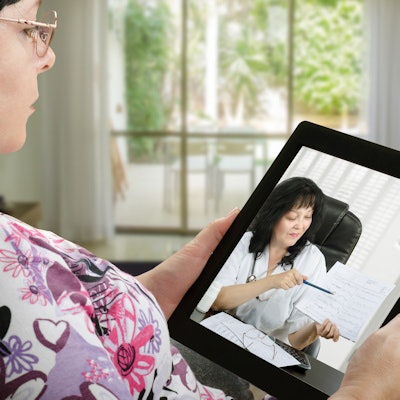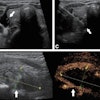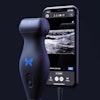
Not including preabortion ultrasound before medication abortion via telemedicine does not compromise patient safety or result in more ongoing pregnancies, according to research published July 27 in Contraception.
However, compared with patients who have preabortion ultrasound, patients who do not have such testing done may be more likely to seek post-treatment care and have procedural interventions, said a team led by Holly Anger from Gynuity Health Projects in New York.
"Compared with patients who had preabortion ultrasound, patients who had no-test medication abortion via telemedicine were more likely to have abortions that were not complete with pills alone and unplanned clinical encounters," Anger and colleagues wrote. "However, both no-test and test-medication abortion patients had similar and very low rates of ongoing pregnancy and hospitalization or blood transfusion."
Telemedicine came into the spotlight with the onset of the COVID-19 pandemic as onsite medical services were disrupted. Clinical guidelines were subsequently revised in the U.S. and other countries for medication abortion. Providers could communicate with patients virtually as self-administered urine tests were used without examination, ultrasound, or laboratory tests to protect a patient's well-being, according to the researchers. Abortion medications could also be delivered by mail.
"Most people can now legally obtain medication abortion without leaving their homes," the researchers wrote.
The team wanted to find out the benefits and drawbacks of no-test medication abortion for patients using telemedicine. Anger and colleagues looked at data from 287 women in multiple U.S states who had no-test medication abortion and 125 women who received preabortion ultrasound or pelvic examination.
They found that abortion was not complete with pills alone in 16 no-test patients compared with two patients who received testing. No ectopic pregnancies were detected. Groups did not differ when it came to hospitalization and blood transfusion or ongoing pregnancy diagnosis. Unplanned clinical encounters were more common in no-test patients (35/287) than patients who received testing (10/125).
The researchers also noted that no-test medication abortion may enable patients to access it via telemedicine sooner and at lower cost, saying that reducing out-of-pocket costs could make for more equitable expansion to medication abortion.
"Our analysis found no evidence that no-test medication abortion leads to an increased risk of outcomes of particular clinical concern," the team wrote. "However, our findings show that approximately 4.3% more no-test patients may have an intervention compared to patients who have preabortion tests."
The authors said their results support the continued use of medication abortion without ultrasound or pelvic examination, as treatment success rates are still high and there wasn't an increase in more serious outcomes. They also called for more "rigorous" research and evaluation of no-test medication abortion to help make clear the consequences of these shifts in practices.
"Our analysis also shows that no-test medication abortion patients may have more postmedication abortion interventions than patients who had preabortion tests," Anger and colleagues wrote. "This increase could be temporary as providers and patients become more comfortable with clinical protocol changes, as has been shown with use of telemedicine more broadly."




















